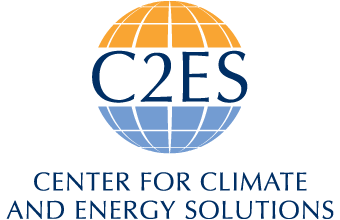
Nathaniel Keohane is President of the Center for Climate and Energy Solutions (C2ES), a widely respected, nonpartisan non-profit organization based in Washington, D.C., that works with policy makers and leading businesses to accelerate the transition to a thriving, just, and resilient net-zero-emissions economy.
Dr. Keohane is a globally recognized expert on climate policy, carbon markets, and environmental economics. He has three decades of climate, energy and environmental policy experience in academia, government, and the non-profit sector, including at Environmental Defense Fund, where he held a range of roles including Chief Economist and Senior Vice President for Climate; in the White House, as Special Assistant to President Obama for Energy and Environment in the National Economic Council (2011-2012); and, earlier in his career, as Assistant and then Associate Professor of Economics at the Yale School of Management. Nat serves on the Harvard Board of Overseers; the boards of the Electric Power Research Institute, Emergent, and Climate Catalyst; the Bank of America National Community Advisory Council; and advisory boards of KKR, New Systems Ventures, and the NYU Institute for Policy Integrity. He holds a Ph.D. from Harvard and a B.A. from Yale. An avid hiker and rower, Nat lives in New York City with his wife and two daughters.
